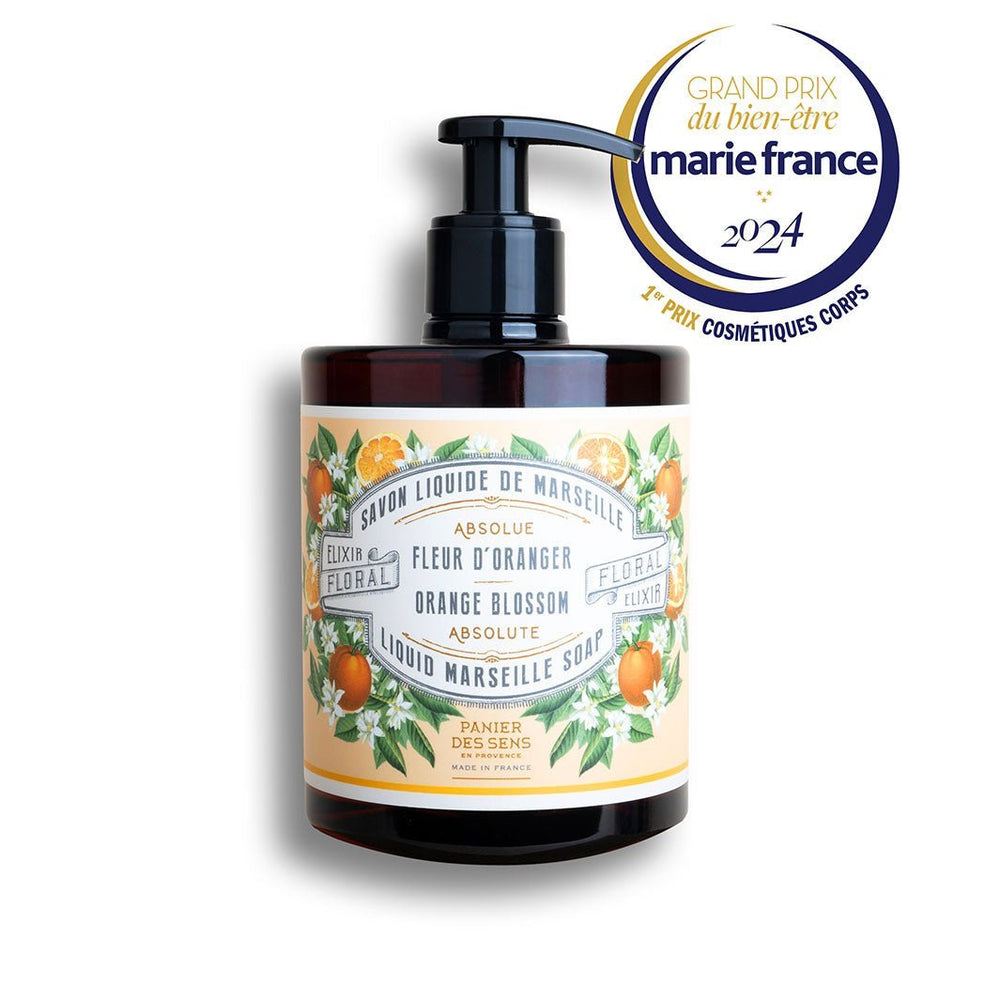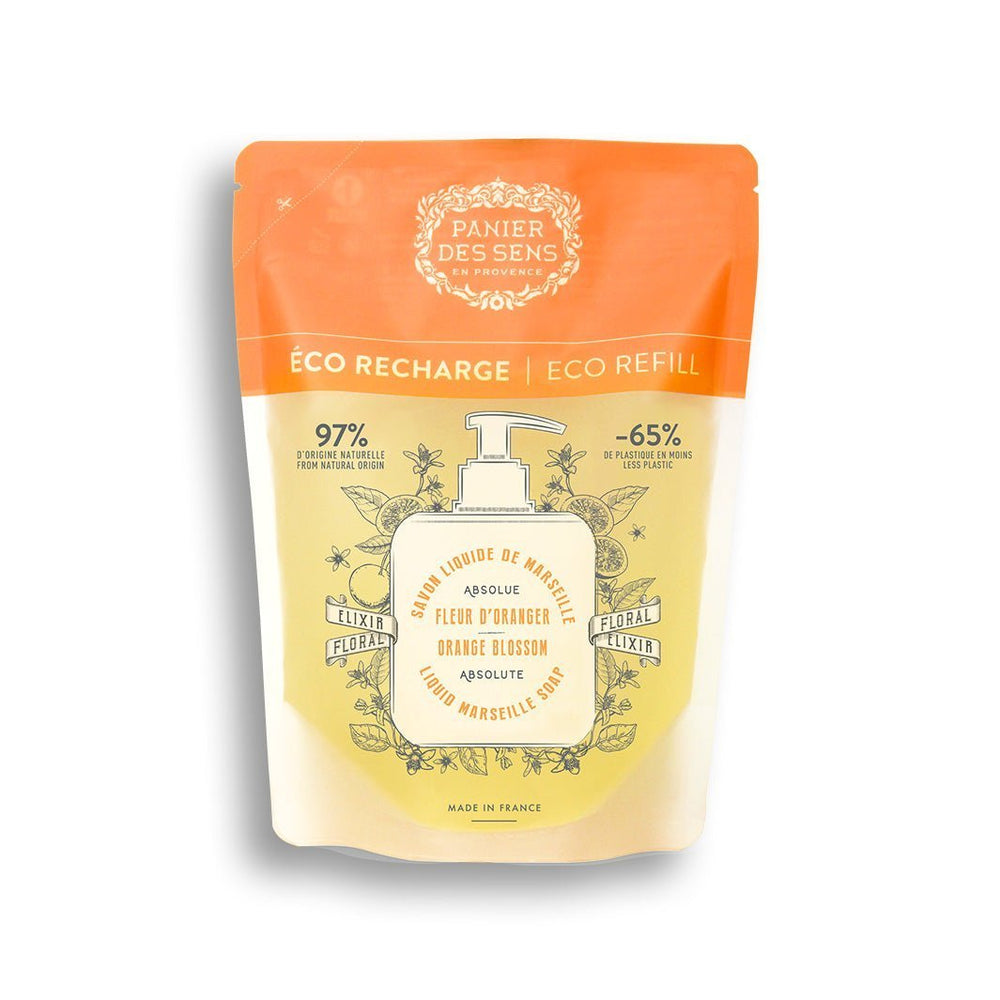Steps in the saponification process for liquid Marseille soap
Liquid Marseille soap is a product that embodies both tradition and naturalness. Saponification, the chemical reaction at the heart of the process, transforms the oils into a mild, skin-friendly soap. This article will detail the basics of saponification, covering the reactions and ingredients involved. Then, it will follow the meticulous process of producing this liquid Marseille soap, from the preparation of the oils to the rigorous monitoring of the reaction. Finally, the finishing touches will be outlined: releasing, maturing, and the packaging methods that preserve the soap's integrity and efficacy.

The fundamentals of saponification
Definition and chemical reaction
Saponification, an age-old scientific term, refers to the chemical process at the heart of soap-making. It involves a transesterification reaction between a fatty substance and a strong base. This molecular ballet transforms the triglycerides in the oils into glycerol and sodium carboxylates, which make up the soap's washing paste.
Basic ingredients
To produce an authentic liquid Marseille soap, the raw materials must be selected with clockwork precision. The aqueous phase consists of cold water in which sodium hydroxide granules are carefully dispersed. The result is a striking exotherm, where the initially icy water heats up almost instantly. In this thermal dance, it's crucial that each crystal dissolves completely before introducing the mixture to the oil phase.
This is the very essence of soap - an alchemy ofvegetable oils chosen for their moisturizing and cleansing properties. Heated to the right temperature, they wait patiently for the caustic solution to transfigure them. Once the two phases have reached their respective thermal thresholds, the lye is gently poured into the oil - never the other way round - to initiate the final pas de deux: vigorous stirring to create a homogeneous paste ready to accept natural fragrances and colorants.
In the workshops where this age-old know-how is perpetuated, each gesture is imbued with an almost monastic rigor; for while the process may seem simple in theory, in practice it requires absolute mastery of temperatures and proportions to obtain a Liquid Marseille Soap faithful to the quality requirements inherited from the master soap-makers.
The saponification process for liquid Marseille soap
Preparing the oils
The adventure of liquid Marseille soap begins with the meticulous selection of vegetable oils, the essential components that will define the product's final properties. These oils, chosen for their purity and dermatological benefits, are prepared with particular care. They are heated to a precise temperature, enabling them to reach the ideal point for reaction with the potash. Each oil variety is carefully weighed to respect the ancestral proportions that guarantee a balanced, rich soap.
Cooking and mixing
Once the oils are ready, they are introduced into a large cauldron, where the first crucial phase of the saponification process takes place. Under the combined action of heat and potash, the oils begin their transformation into a creamy paste. This Marseille process, known as "à grand feu", requires the master soap-maker to constantly monitor the evolution of the mixture for ten days at a temperature approaching 120°C. This is where his expertise comes into its own: adjusting the heat, stirring the paste, he ensures that each stage runs smoothly.
Monitoring and controlling the reaction
During those endless days when soap simmers gently in its cauldron, the master soap-maker exercises his talents by meticulously orchestrating the washing stage. This purification gives the soap its legendary softness and characteristic "extra pure" texture. Each batch then undergoes rigorous testing to ensure that quality standards are beyond reproach, before casting into molds - the pivotal moment when the final consistency of the liquid soap is decided.
Finishing and packaging
Releasing and adding glycerine
At the end of a long chemical ballet, the soap paste undergoes a delicate process known as relargage, where it is washed to remove all traces of potassium. This purification is followed by the meticulous addition of glycerine, a key ingredient that enriches the soap, giving it unrivalled softness and optimal hydration for the skin. Mastery of this phase is essential: a precise quantity must be incorporated to preserve the perfect balance between effective cleansing and nourishing care.
Maturation and texture adjustment
Once the glycerine has been harmoniously mixed with the paste, the maturing process begins. Like a fine wine aging in a cellar, the soap matures and develops its intrinsic qualities during this crucial period. It's also at this stage that the texture of the liquid soap is finely tuned; master soap-makers take great care to achieve a creamy consistency that will make all the difference in daily use.
Packaging and storage
Finally, it's time for packaging. The soap is transferred into containers chosen not only for their practicality, but also for their ability to preserve the product's integrity. Each bottle or can must ensure a perfect seal, so that the soap retains all its beneficial properties right up to its final use. Preservation is not taken lightly: conditions must be optimal so that every drop of the precious liquid remains a faithful ambassador of the ancestral virtues of genuine Marseille soap.
We recommend these other pages:







































